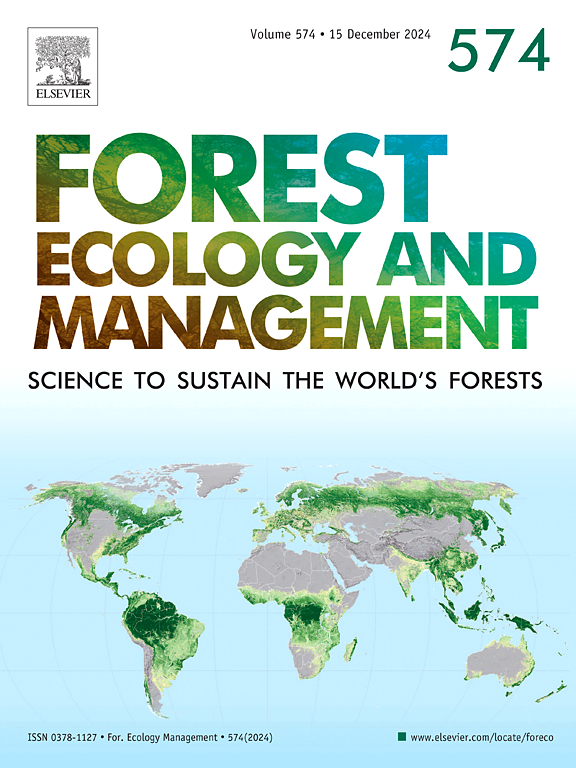Understanding wildfire occurrence and size in Jalisco, Mexico: A spatio-temporal analysis
IF 3.7
2区 农林科学
Q1 FORESTRY
引用次数: 0
Abstract
In recent years, the growing frequency and severity of wildfires, influenced by both human activities and climate change, have posed significant challenges worldwide. Among the regions most affected by wildfires in Mexico is the state of Jalisco, which has the largest accumulated burned area in the last five decades. In this paper, we present an in-depth analysis of the spatio-temporal patterns of wildfire occurrence and size in the state of Jalisco, spanning the period from 2001 to 2020. Our approach included modeling the spatial distribution of the area burned by wildfires, employing Bayesian methodology with Integrated Nested Laplace Approximation (INLA) and Stochastic Partial Differential Equations (SPDE). Our findings highlight the critical roles of vegetation, temperature, and human activities in shaping wildfire behavior. Additionally, our model suggests four distinct wildfire-prone regions within the state. The insights gained from this study can serve as a foundation for future research and localized studies, aiding in the development of more targeted and effective wildfire management strategies in Jalisco.
了解墨西哥哈利斯科州的野火发生率和规模:时空分析
近年来,受人类活动和气候变化的影响,野火日益频繁和严重,给全世界带来了巨大挑战。墨西哥受野火影响最严重的地区之一是哈利斯科州,该州在过去五十年中的累计烧毁面积最大。在本文中,我们对哈利斯科州 2001 年至 2020 年期间野火发生和规模的时空模式进行了深入分析。我们的研究方法包括利用贝叶斯方法、嵌套拉普拉斯近似法(INLA)和随机偏微分方程(SPDE)对野火焚烧面积的空间分布进行建模。我们的研究结果强调了植被、温度和人类活动在塑造野火行为中的关键作用。此外,我们的模型还提出了该州四个不同的野火易发区。从这项研究中获得的洞察力可作为未来研究和本地化研究的基础,帮助哈利斯科州制定更有针对性和更有效的野火管理策略。
本文章由计算机程序翻译,如有差异,请以英文原文为准。
求助全文
约1分钟内获得全文
求助全文
来源期刊

Forest Ecology and Management
农林科学-林学
CiteScore
7.50
自引率
10.80%
发文量
665
审稿时长
39 days
期刊介绍:
Forest Ecology and Management publishes scientific articles linking forest ecology with forest management, focusing on the application of biological, ecological and social knowledge to the management and conservation of plantations and natural forests. The scope of the journal includes all forest ecosystems of the world.
A peer-review process ensures the quality and international interest of the manuscripts accepted for publication. The journal encourages communication between scientists in disparate fields who share a common interest in ecology and forest management, bridging the gap between research workers and forest managers.
We encourage submission of papers that will have the strongest interest and value to the Journal''s international readership. Some key features of papers with strong interest include:
1. Clear connections between the ecology and management of forests;
2. Novel ideas or approaches to important challenges in forest ecology and management;
3. Studies that address a population of interest beyond the scale of single research sites, Three key points in the design of forest experiments, Forest Ecology and Management 255 (2008) 2022-2023);
4. Review Articles on timely, important topics. Authors are welcome to contact one of the editors to discuss the suitability of a potential review manuscript.
The Journal encourages proposals for special issues examining important areas of forest ecology and management. Potential guest editors should contact any of the Editors to begin discussions about topics, potential papers, and other details.
 求助内容:
求助内容: 应助结果提醒方式:
应助结果提醒方式:


